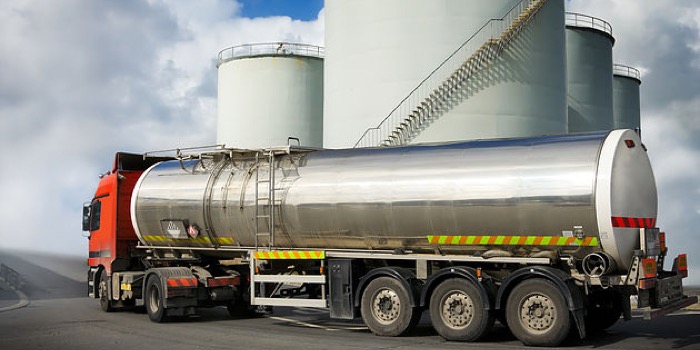Composite hydrogen tank to decarbonise HGVs
A composite hydrogen storage tank has been developed for the heavy-duty transport sector as a secure UK supply chain for thermoplastic liners has been created.
Composites experts from the University of Sheffield Advanced Manufacturing Research Centre (AMRC) worked alongside two SME manufacturers on the 12-month project, which was funded by the HVM Catapult. AMRC were joined in the endeavour by Crossfield Excalibur, a specialist in tooling design for rotationally moulded parts, and Elite Ground Support Services, which provides rotation, extrusion and compression mouldings for the automotive sector.
Zeeshan Qureshi, lead research engineer at the AMRC Composite Centre, said: “Working closely with our two chosen SMEs, we are on a mission to help accelerate the UK hydrogen storage supply chain and enable rapid production of hydrogen pressure vessels through automated design, manufacture and validation to meet net zero targets and to help push forward the decarbonisation of road transportation nationwide.”
The team designed, manufactured and tested a Type 4 cylindrical hydrogen pressure vessel made from filament which would carbon-fibre over a thermoplastic liner. The tank has been designed for the automotive sector and has the capacity to hold 40 litres of hydrogen at 350 bar.
Stuart Dawson, chief engineer for hydrogen at the AMRC, said: “Heavy long-haul vehicles are one of the most challenging segments of the road transport sector to reduce emissions due to their long journey distances and heavy payload requirements.
“For the operational economics to stack up, HGVs need long range and fast refuelling. The weight of batteries would reduce the vehicle’s potential payload and range and would require long recharging times. So, for heavy-duty, long-range transport applications, hydrogen fuelled vehicles – whether they are powered via fuel cells or combustion – are the ideal solution.
“Conventional metallic hydrogen storage tanks are heavy and would reduce the vehicle’s payload. What is needed for transport and applications is safe, affordable and lightweight hydrogen storage tanks. However, despite the high projected future demand for such tanks, there is virtually no UK manufacturing capability for composite pressure vessels,” continued Dawson.
“This project seeks to address this issue through the development of globally competitive methods of manufacture for lightweight, Type 4 hydrogen storage tanks that could eventually be deployed into UK industry,” he concluded.
AMRC said next steps are to continue optimising the designs and the manufacturing process of the pressure vessels, develop testing capabilities further and to increase its storage capacity.
For more information visit www.amrc.co.uk
30th May 2022















